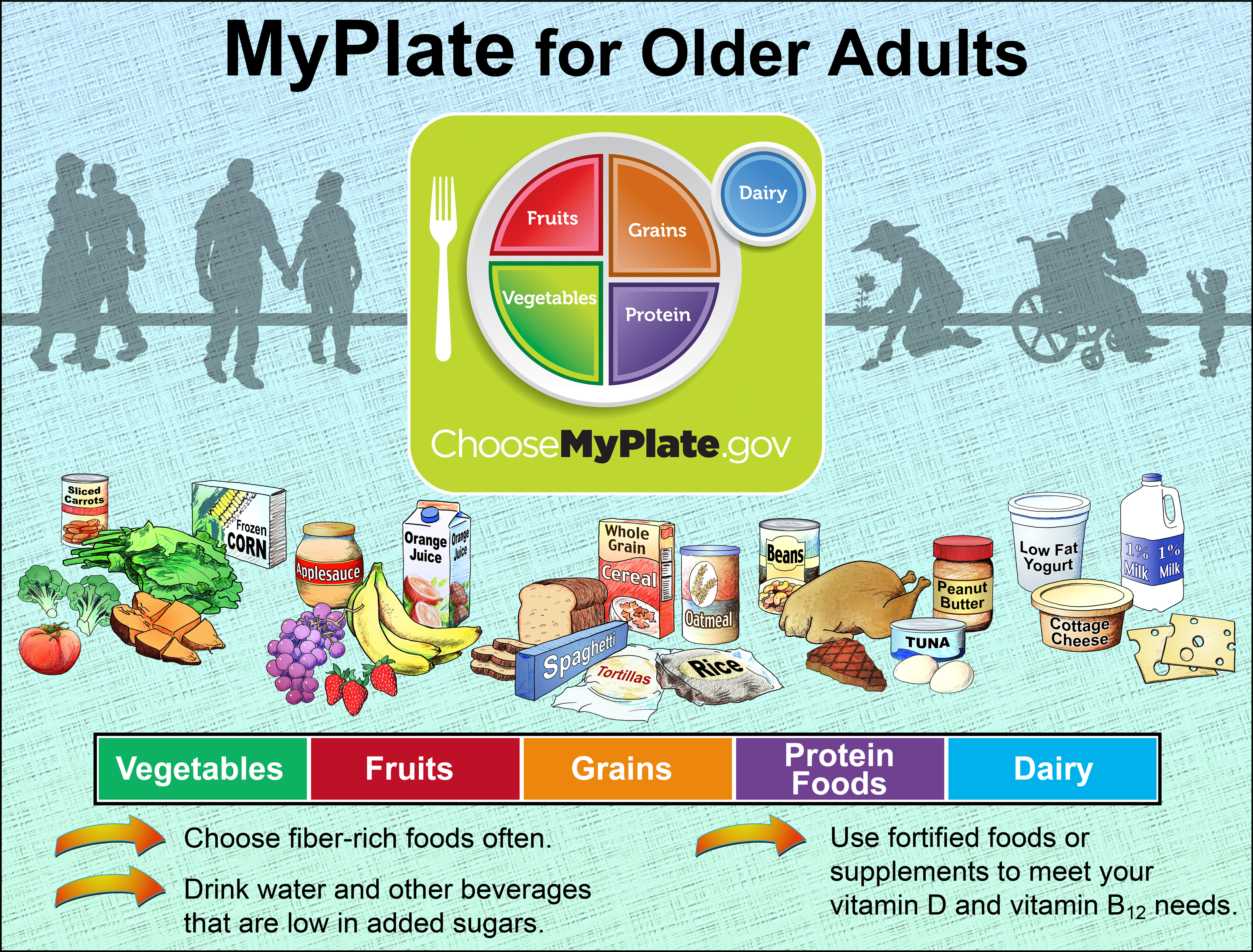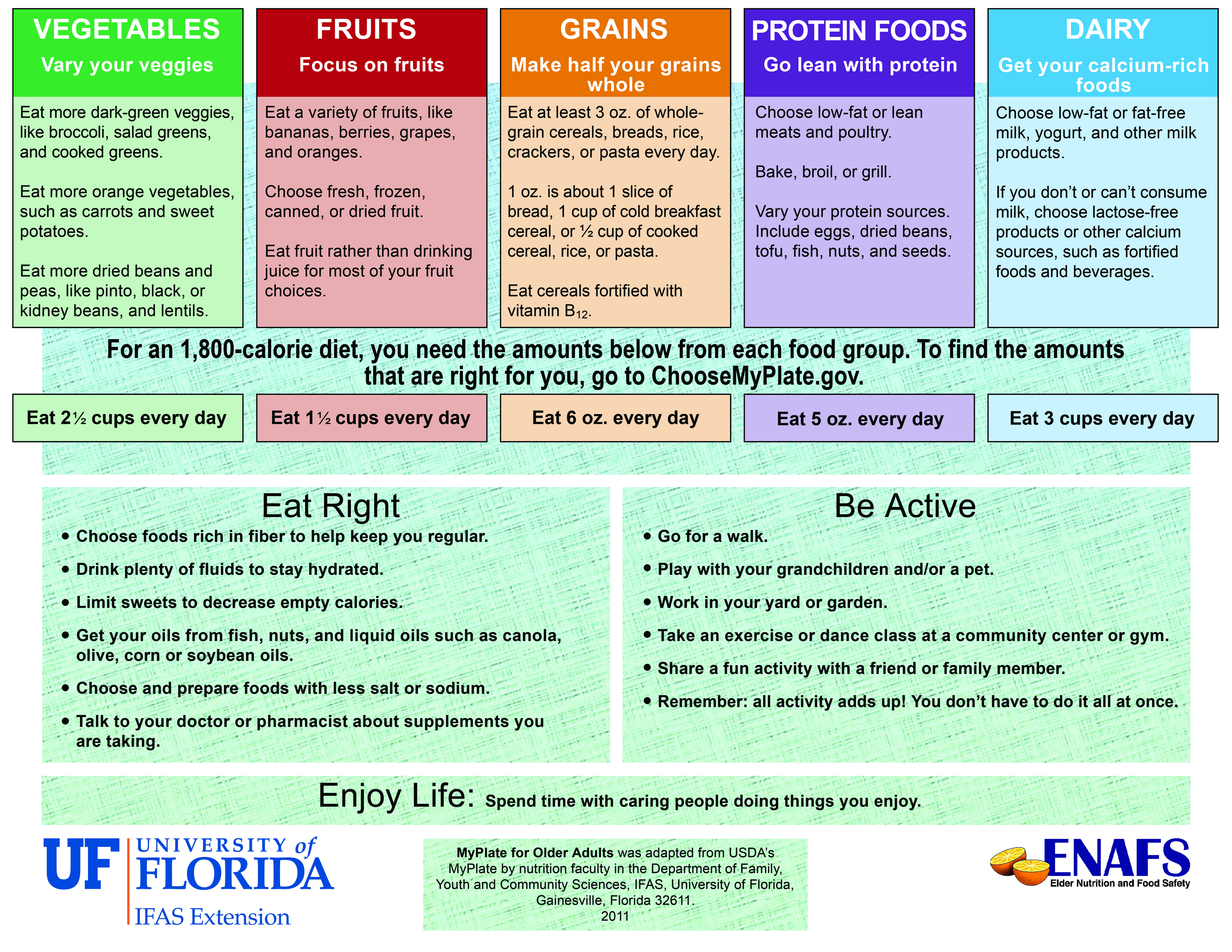Nutrition is important for your health at every stage of life, from pregnancy to late in life. As your body changes from a rapidly growing baby and teenager then slowing into adulthood and older age, your nutrient needs also change. Let’s look at how eating smart works for older adults.

MyPlate for Older Adults from Florida Cooperative Extension, pdf version here.
Calorie Needs
As you age, you need fewer calories. If we aren’t careful and cut back to match this decline, we could put on extra pounds even while eating exactly the same as when we were younger.
Protein Needs
Move it or lose it. Without being active, older adults can lose their muscle mass. This slows down metabolism, which is why calorie needs go down with age. This also affects strength and balance. Be sure to eat protein rich foods, like lean meats, beans, and seafood. Staying physically active also helps slow down or even reverse muscle loss.
Vitamin and Mineral Needs
At the same time your calorie needs are going down, your needs for certain nutrients are actually going up. This happens because your body isn’t as efficient at getting some nutrients, like Vitamins D, B12, zinc, calcium and iron, from foods. Many older adults need vitamin and mineral supplements to meet their needs. Your doctor can help choose the right ones for you.
Fiber Needs
As we age, our intestines start to run a little slower, which increases the risk of constipation. To keep things moving, it is important to get enough fiber. Fiber is found in fruits, vegetables, and whole grains. These foods also are very nutritious, providing higher levels of important vitamins and minerals than convenience-type foods.
Fluid Needs
Older adults are at a higher risk of dehydration because they are less aware of thirst signals from the body. Without feeling thirsty, it’s easy to forget to drink enough. Fluid needs go up with increased fiber intake also. Make sure to drink plenty of healthy drinks throughout the day. Drink more water, unsweetened coffee or tea and milk and less sugary drinks.
Disease-related Needs
Over the years, many older adults develop chronic diseases, like diabetes, high blood pressure, heart disease or kidney disease. These diseases and the medicine used to treat them can change your dietary needs. Work with your doctor and/or dietitian to eat the best diet in order for you to manage your health.
When you add up all these changes, your diet needs to be nutrient-dense and full of whole, nourishing food. There is less room for convenience-type foods high in fat, sugar and salt while still maintaining calorie balance and meeting nutrient needs. And when you think of it like that, it’s not too different from eating smart at any other time in your life.

MyPlate for Older Adults from Florida Cooperative Extension, pdf found here.
You can find more information on nutrition for healthy aging at these sites:
National Institute on Aging’s What’s on Your Plate?
NIH Senior Health’s Eating Well As You Get Older
National Institute on Aging’s Healthy Eating After 50
